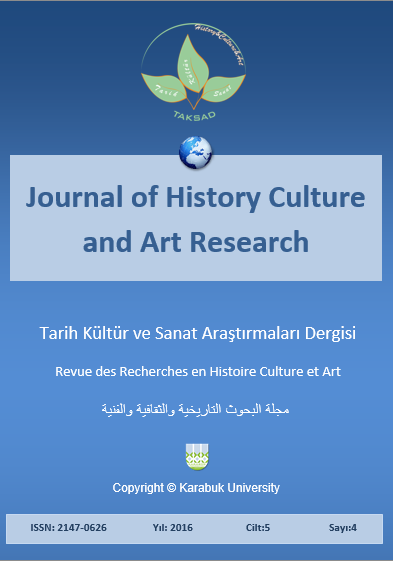Measurement of Affecting Factors on Jewelry Choice in Tehran
DOI:
https://doi.org/10.7596/taksad.v5i4.623Keywords:
Consumption, Ornament, Jewelry choice, Jewelry design, Audience-oriented design, Tehran.Abstract
One of the production features in post-industrial era is diversified production capacity while maintaining the economic structure of production, which leads to variations in structure of design processes. The needs and preferences of customers shape production processes. As a result, measuring consumer behavior becomes important to design a product. This study aims to identify consumer behavior while choosing ornaments, especially jewelry, in Iran by determining the correlation between economic status and other independent variables, including sex, age, and ethnicity, on purchasing behavior. A field research, including a survey with 200 people, was conducted in Iran to find the consumer behavior. The results of questionnaire analysis remark effect of various variables such as different economic status, ethnicity and education level on expected concepts in jewelry and their symbolic use, where these results of model and image analyses are able to help us in production planning and jewelry design.
References
Bakak, Robert (2002). “Consumption”. Translated by Khosrow Sabri. Tehran: Shirazeh Publications.
Bourdieu, Pierre (2009). “Distinction: A social critique of judgments of taste”. Translated by Hassan Chavoshian. Tehran: Sales Publications.
Timothy, J. Dalen (2009). “The sociology of consumption (tourism and shopping)”. Translated by Ali Asghar Saeedi and M. Hossein Abadi [Tehran]: Jame-e shenasan Publications.
Jenkins, Richard (2006). “Pierre Bourdieu”. Translated by Leila Jowafshany and Hassan Chavoshian. Tehran: Ney Publications
Zokaei, Mohammad Saeed (2012). “Leisure, consumption and society; critical speech”. Tehran: Tisa Publications.
Ritzer, George (2010). “Contemporary sociological theory”. Translated by M. Salasi [Tehran]: Elmi Publications.
Sarvari, Saloume (2009). “Design on the passage of time; industrial design, architecture, art and design history”. Tehran: Jahan-e Now Publications.
Fazeli, Mohammad (2003). “Consumption and lifestyle”. Tehran: Sobh-e Sadegh Publication
Maslow, Abraham. H. (1993). “motivation and personality”. Translated by Ahmad Rezwan Mashhad: Astan-e Qods-e Razavi Publications.
Momtaz, F. (2004). "To introduce the concept of class from the perspective of Bourdieu". Journal of Human Sciences: 42-41. Spring and summer 2004: 160-149.
Varastefar, A. and Mokhtari, H. (2009). "The pattern of consumption among women of Tehran" Journal of Pajuhesh-e Ejtemaee. Winter 2009: 62-41.
Veblen, Thorstein (2007). “Leisure class theory”. Translated by ministry of Culture, with an introduction by C. Wright Mills. Tehran: Ney Publications.
Grimsaeth, K. (2005). “Kansei Engineering”. Times [online] 10 january. Available from www.ivt.ntnu.no.
Nagamachi, M. (1995). Kansei Engineering: “A new ergonomic consumer-oriented technology for product development”. International Journal of Industrial Ergonomics 15, pp 3-11.
Nagamachi, M. (2008). “Perspectives and the new trend of Kansei/affective Engineering”. The TQM Journal, 20(4): pp 290-298.
Tarantino, P. (2008). “A Statistical Thinking Approach to Kansei Engineering for Product Innovation”. PhD. Thesis, University of Naples Federico II.
Zhang, T & Dong, H. (2008). “Human-centre design: an emergent conceptual model”. In Royal College of Art, April 8-10, 2009. London: Include2009 proceedings.
Simmel, Georg. (1957). “Fashion.” American Journal of Sociology. 62:1, pp.541-
Yılmaz, Selman (2013). “Cultural Muslims: Popular Religiosity among Teachers in Public Elementary Schools in Turkey.” Journal of History, Culture and Art Research. 2:3, pp.237-258.
Downloads
Published
How to Cite
Issue
Section
License
All papers licensed under Creative Commons 4.0 CC-BY.- Share — copy and redistribute the material in any medium or format
- Adapt — remix, transform, and build upon the material for any purpose, even commercially.
Under the following terms:
Attribution — You must give appropriate credit, provide a link to the license, and indicate if changes were made. You may do so in any reasonable manner, but not in any way that suggests the licensor endorses you or your use.
- No additional restrictions — You may not apply legal terms or technological measures that legally restrict others from doing anything the license permits.







